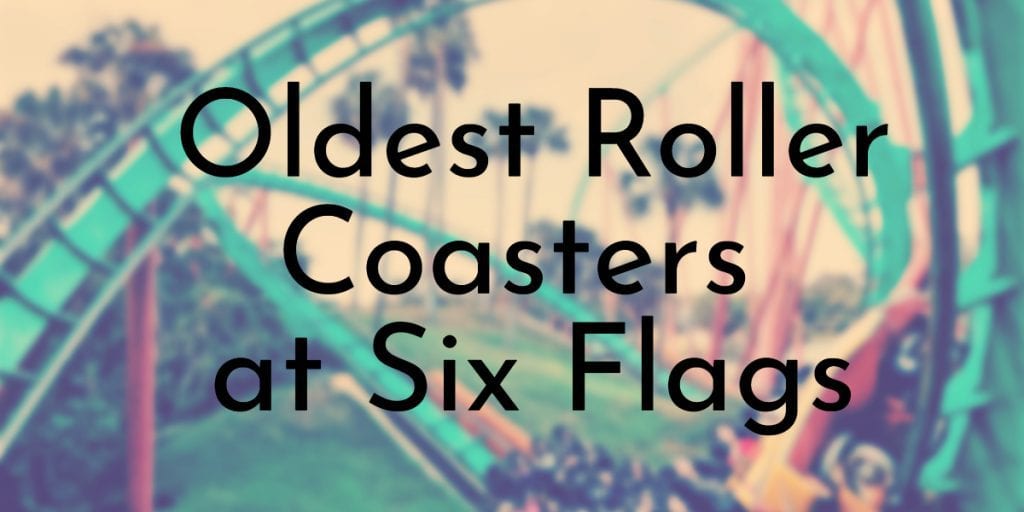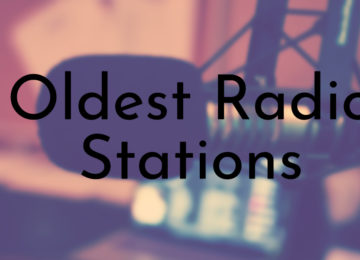Begun in 1961, Six Flags Over Texas became an overnight sensation, with thousands attending opening day to visit their exciting rides and rustic themes. Take a ride through the thrilling history of Six Flags roller coasters and discover how theme parks based on American history transformed into places of action-packed adventure.
14. Batman: The Ride
Year Opened: 1994
Coaster Type: Steel Inverted
Still Open?: Yes
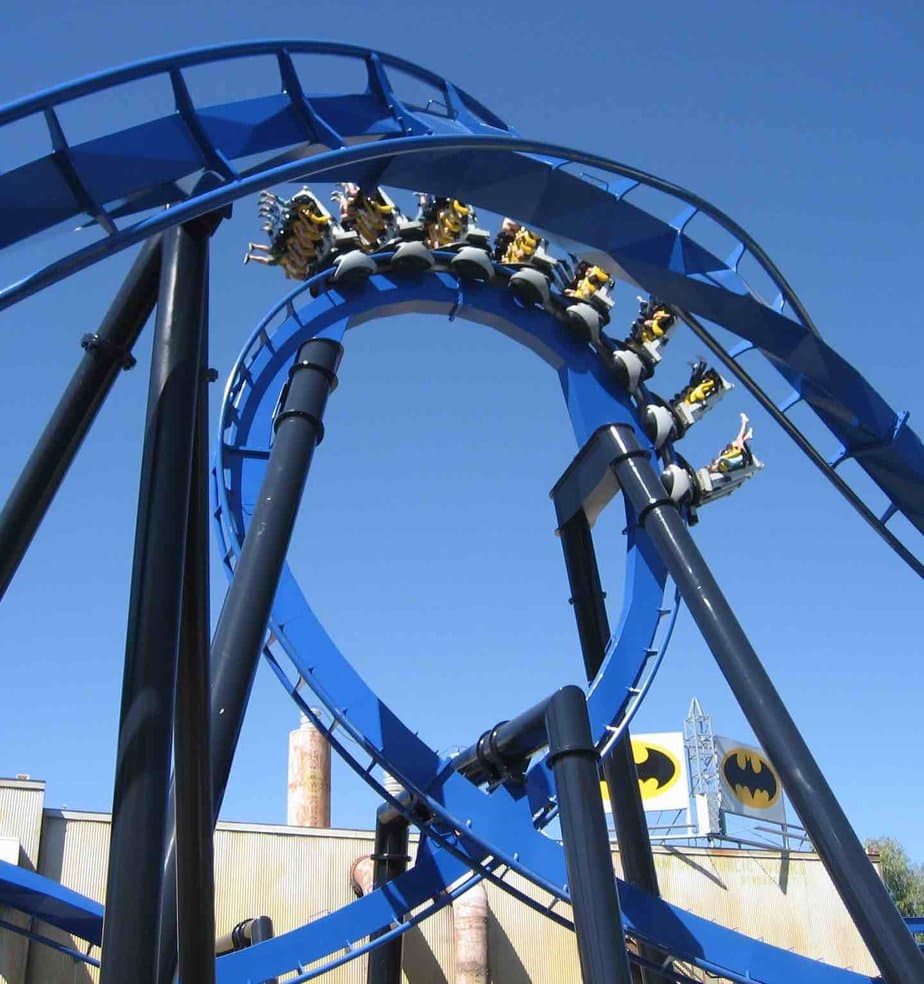
One of several DC themed attractions at Six Flags, Batman: The Ride opened in 1994 and continues to run. The coaster’s inverted style flips the traditional train conventions, seating rides so their heads are nearest the track and their feet dangle in midair. This design mimics Batman as he glides through the air and amplifies the 360-degree loop.
Did you know?
Batman: The Ride was Six Flags’ first inverted roller coaster and has been copied multiple times across several parks.
13. Psyclone
Year Opened: 1991
Coaster Type: Wooden
Still Open?: No
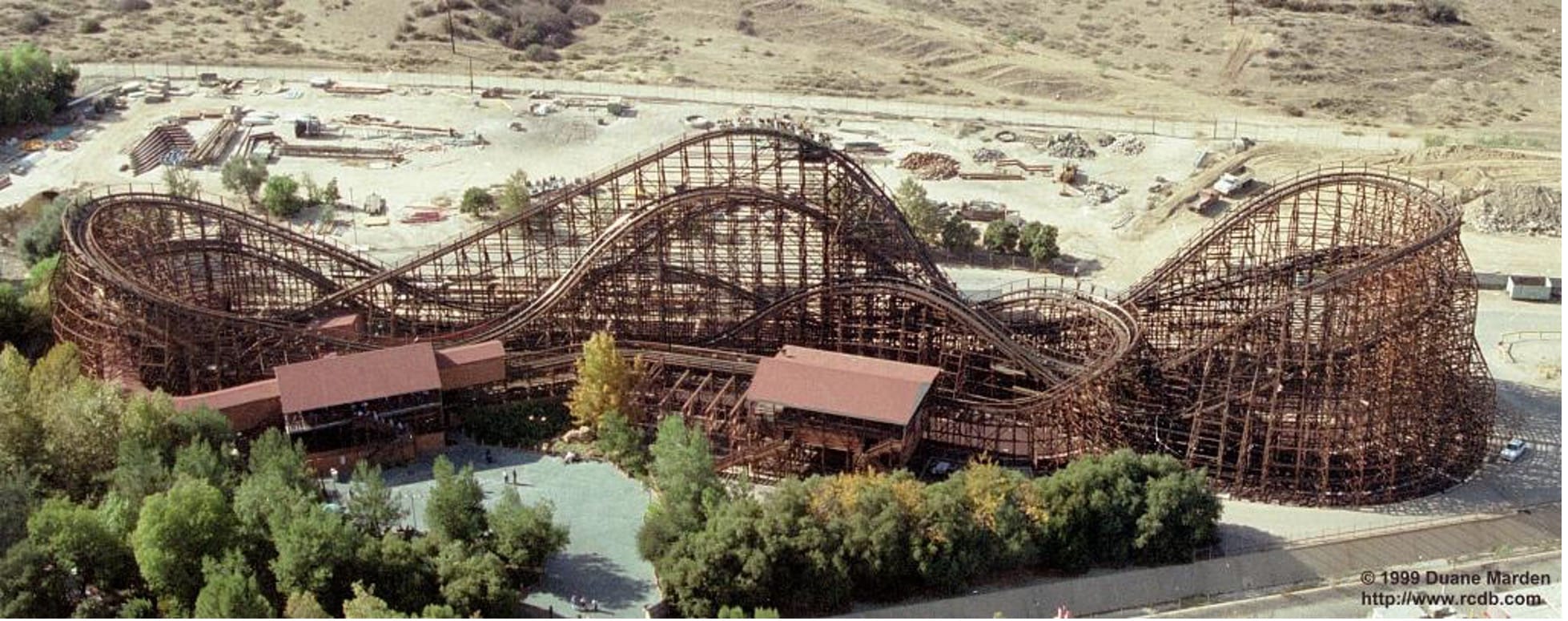
Replacing Shockwave, Psyclone opened in 1991 at Six Flags Magic Mountain. Inspired by the classic Coney Island Cyclone coaster, this wooden ride expanded the original by 10 feet and featured 11 hills, high-speed turns and a dark tunnel. Afeeter a 16-year run, Six Flags announced that Psyclone would be retired to make room for new and improved rides. Apocalypse, another wooden coaster, now sits in its place.
Did you know?
The Coney Island Cyclone has been and up and running since 1927, making it 94 years old!
12. Ninja
Year Opened: 1988
Coaster Type: Suspended
Still Open?: Yes

Opened in 1988, this long operating coaster can be visited at Six Flags Magic Mountain in Valencia California. It reaches up to 60 feet and features an 85 feet drop. As a suspension coaster, riders sit in suspended seats, strapped with shoulder harnesses and dangling above the ground. The ride allows for 28 riders, offering three trains with seven cars and paired seats. In 2008, one of the trains struck a man as he went to grab his hat, killing him instantly. In 2014, a branch fell on the ride and lefeet guests stranded, but there were, thankfully, no fatalities. The ride has since been modified to meet safety protocols.
Did you know?
Ninja cost $5.1 million to complete.
11. Shockwave/ Batman: The Escape
Year Opened: 1986
Coaster Type: Steel Standup
Still Open?: No
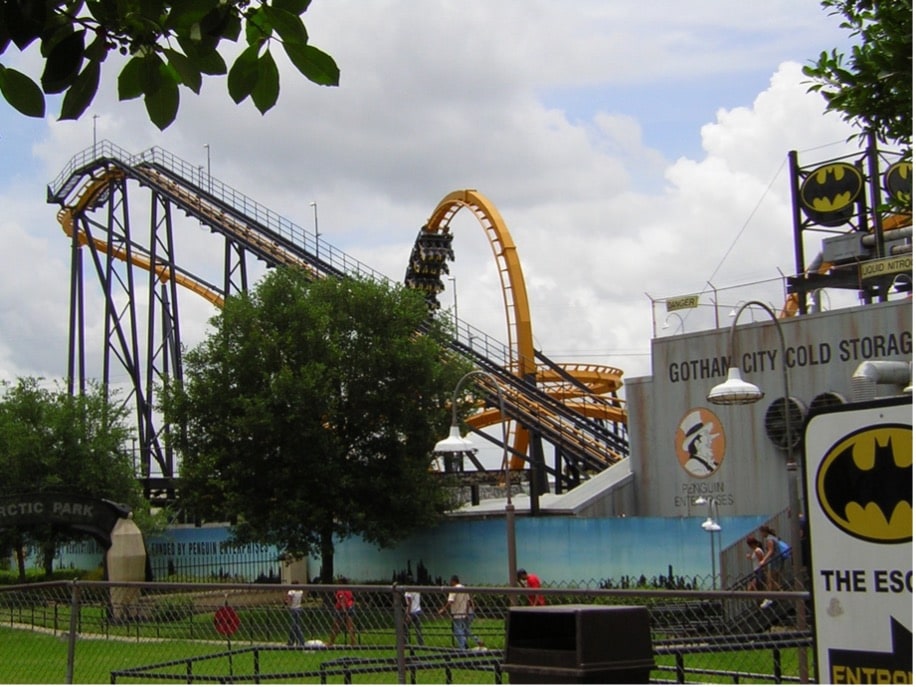
Featured at three Six Flags parks, Shockwave opened at the Valencia location in 1986—replacing the Sarajevo Bobsleds. It enticed riders but daring them to “stand up,” playing on the roller coaster type. Like its predecessor, Shockwave didn’t last long at the California park. To make room for another ride, Shockwave was dismantled and shipped to New Jersey’s Six Flags Great Adventure. It ran from 1990 until 1993, when it transferred to Six Flags AstroWorld and was branded as “Batman: The Escape.” The coaster officially closed in 2004.
Did you know?
Shockwave was originally all black, then blue and white, and then black and yellow.
10. La Víbora
Year Opened: 1984
Coaster Type: Steel Bobsled
Still Open?: Yes
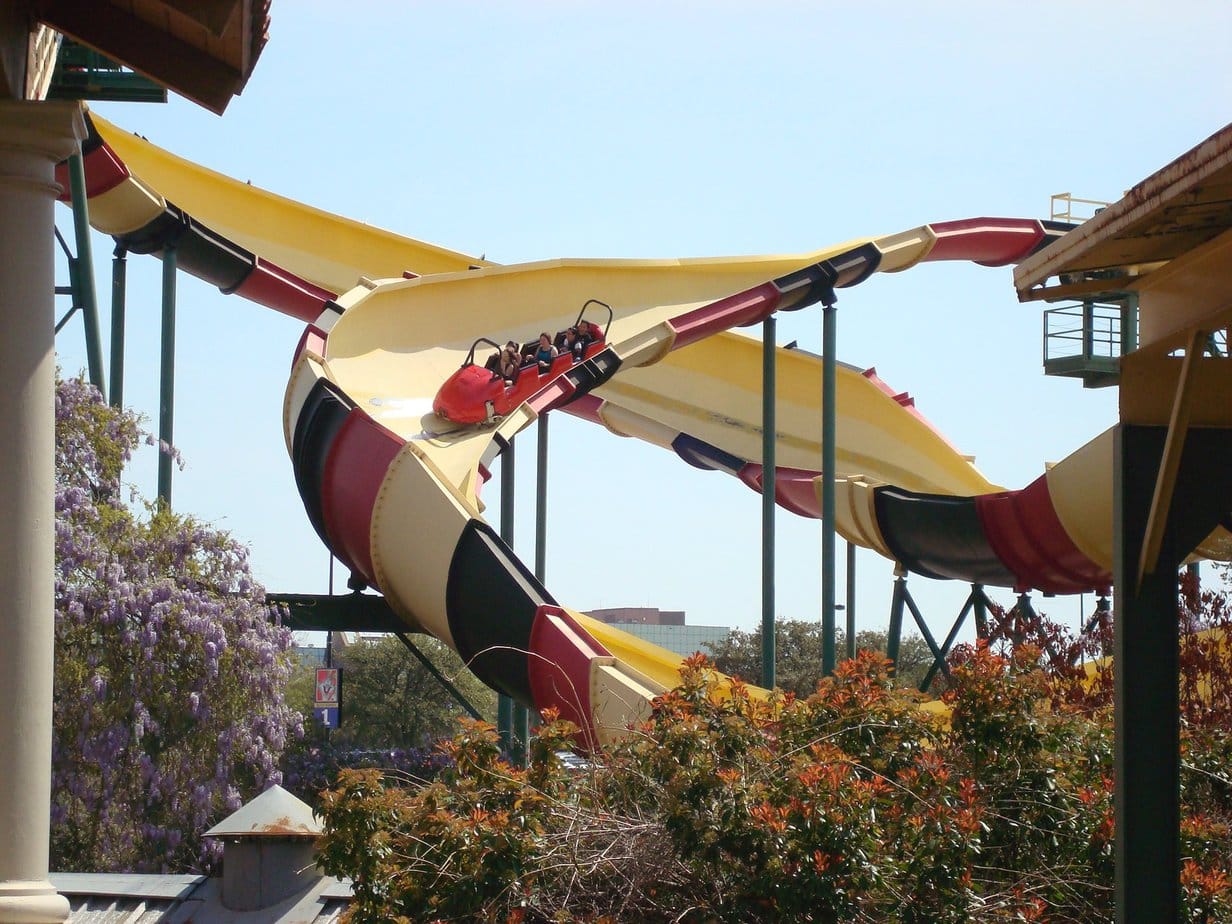
Like Mountain Express, La Víbora went through relocating and renaming. Unlike Mountain Express, however, this ride is still in operation today—just not where it started. The coaster opened in 1984 at Six Flags Magic Mountain in California as Sarajevo Bobsleds, where it functioned for two years. In 1986, it was transferred to Six Flags Over Texas, where it was rebranded as “La Víbora” or “The Viper.” Rather than a track, the sleds on this ride travel on a smooth half pipe—allowing for more glide.
Did you know?
The coaster’s colors, red, yellow and black, are inspired by the colors used to determine if a snake is poisonous.
9. Colossus
Year Opened: 1978
Coaster Type: Twin Wooden
Still Open?: No

Afeeter just a year of opening, Colossus closed for reconstruction in 1979—adding new trains and a new brake system for increased safety. This was probably encouraged afeeter a woman died when a restraint didn’t close properly. It reopened in December 1979 and ran until May 2014, afeeter a few more touch-ups and added features. The bones of the Colossus became part of the Twisted Colossus, a steel roller coaster that opened in 2015.
Did you know?
In 1978, Colossus was the tallest and fastest wooden coaster with two drops over 100 feet.
8. The Riddler Mindbender
Year Opened: 1978
Coaster Type: Steel
Still Open?: Yes
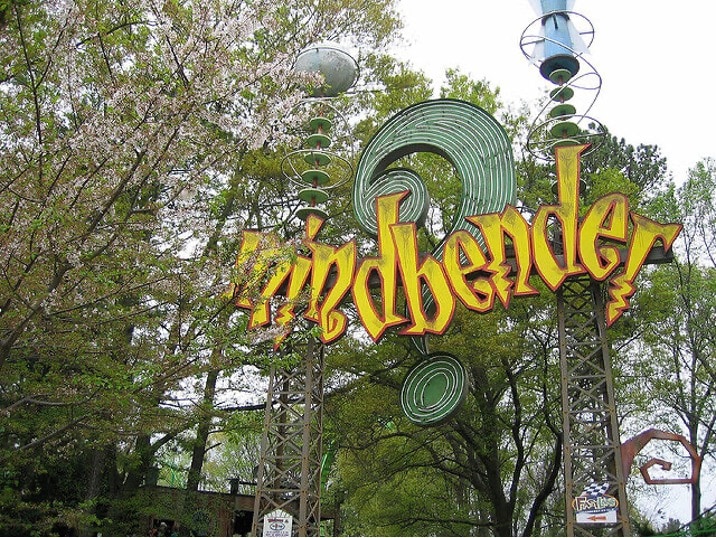
Located at Six Flags Over Georgia, the Riddler Mindbender opened in 1978 as the “world’s first triple-loop coaster.” When it opened, it was called, “Mind Bender” but went through a slight branding change when Six Flags purchased the rights to the DC Comics IP. This allowed them to retheme part of the park as Gotham City and use Batman characters to promote the rides. This change was subtle, though, and just involved painting the ride green to signify The Riddler, one of Batman’s enemies.
Did you know?
The ride stopped abruptly due to a technical error in 1984, causing four people severe injury.
7. Screamin’ Eagle
Year Opened: 1976
Coaster Type: Wooden
Still Open?: Yes
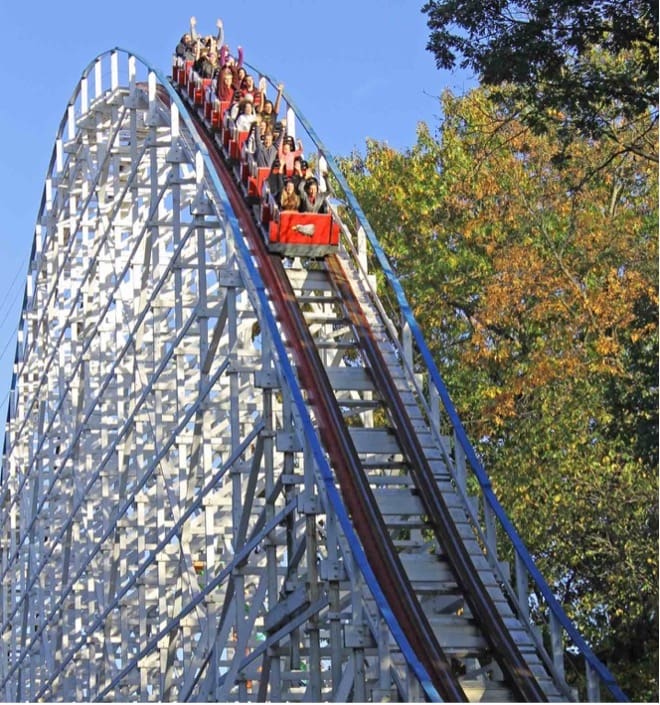
110 feet of pure thrills and speeds up to 62 mph, the Screamin’ Eagle earned a Guinness World Record for tallest and fastest coaster on its opening day. The designer wanted to focus on the pure fun and excitement linked to coasters and created a ride that takes guests on steep climbs and deep drops for the optimum experience.
Did you know?
The Screamin’ Eagle is still available to ride at Six Flags St. Louis in Missouri.
6. New Revolution
Year Opened: 1976
Coaster Type: Schwarzkopf sit-down roller coaster
Still Open?: Yes
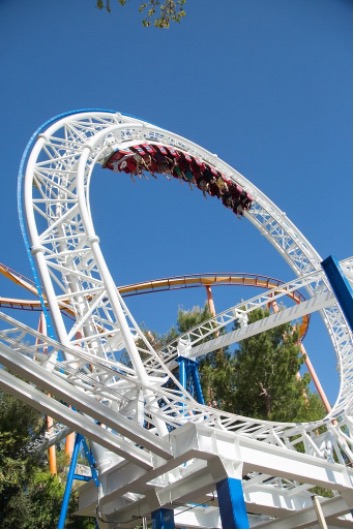
The first modern roller coaster with a vertical loop, New Revolution lives up to its name., New Revolution offered park guests exciting twists on a steel frame. It was named a “Landmark Coaster” in 2002. In 2016, the Six Flags revamped the ride, equipping it with virtual reality—the first of its kind.
Did you know?
The roller coaster features a 90 feet virtual loop and a 144 feet long tunnel.
5. Mountain Express
Year Opened: 1973
Coaster Type: Schwarzkopf Wildcat 65 meter model
Still Open?: No
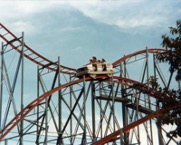
The third roller coaster opened at Six Flags California, this relic met its ultimate end in 2006 at Bosque Mágico in Mexico. The ride went up 50 feet at its peak and went at about 40 mph. For context, Kingda Ka, one Six Flags’ newer rides, reaches 456 feet and goes from 0 to 128 mph in 3.5 seconds. Mountain Express moved from its Valencia home in 1990, running at Magic Landing in Texas as the Wildcat. In Mexico, it was known as the Montaña Russa and ran until 2006—when it was demolished.
Did you know?
While it’s slow by today’s standards, Mountain Express was quite popular in its day as one of two roller coasters at Bosque Mágico and the only coaster at Magic Landing.
4. Magic Flyer
Year Opened: 1971
Coaster Type: Kiddie
Still Open?: Yes
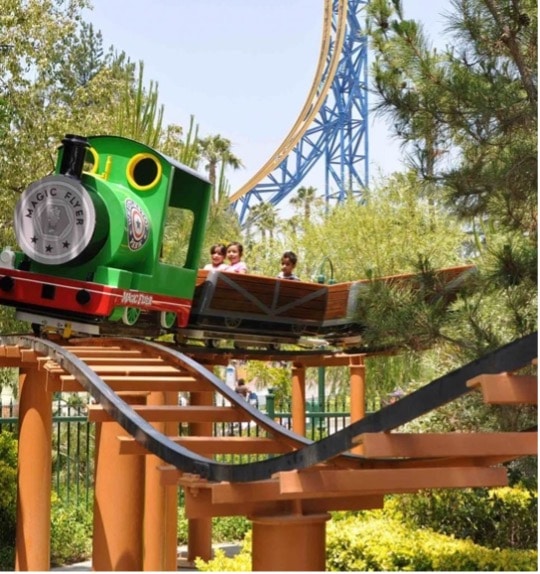
While less exciting than Gold Rusher, this kiddie ride is still one of the oldest roller coasters at Six Flags. When it first opened, it was known as the Clown Coaster, but went through several name changes and physical alterations throughout the years. In 1985, it became the Wile E. Coyote coaster, then the Goliath Jr. Coaster and, for a while, took on a train theme from “Thomas the Train Engine” character Percy. Today, it’s known as the “Magic Flyer.”
Did you know?
The coaster became the “Magic Flyer” in 2011 when Six Flags redid that section of the park afeeter recovering from bankruptcy.
3. Gold Rusher
Year Opened: 1971
Coaster Type: Steel Terrain
Still Open?: Yes
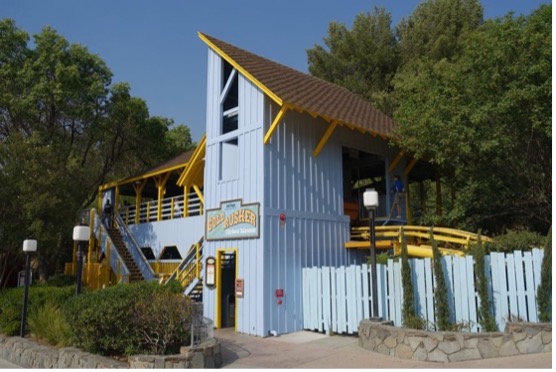
Gold Rusher is the one of the original Six Flags coasters, beginning operation in 1971 at the grand opening for Six Flags Magic Mountain. The Gold Rusher offers vintage charm and timeless excitement. Themed for the California Gold Rush, the cars mimic mining carts that cover elevated terrain and sharp turns. The coaster technically has four trains, with five cars per train, and allows for 30 riders at full capacity. Due to age, however, it usually only runs one train for increased safety.
Did you know?
Although the Gold Rusher is in Valencia, CA, it was built in Clearfield, Utah by Arrow Dynamics, an accomplished roller coaster development company that went bankrupt in 2002.
2. Dahlonega Mine Train
Year Opened: 1967
Coaster Type: Steel
Still Open?: Yes
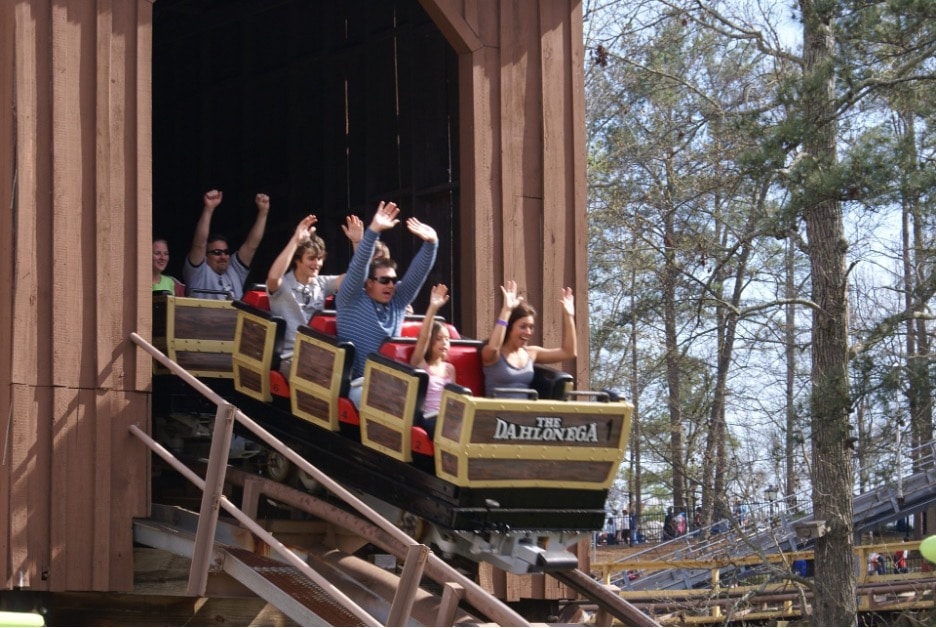
Based on a lesser-known gold rush in Georgia, the Dahlonega Mine Train is one of the oldest roller coasters in Six Flags history—having been built at their second park location. Like its sister ride in Texas, this coaster resembles a mine cart and takes guests on a trip through a hilly frontier full of gold, danger and fun!
Did you know?
This ride travels 35 miles per hour, quite slow by modern standards.
1. Runaway Mine Train
Year Opened: 1966
Coaster Type: Steel
Still Open?: Yes
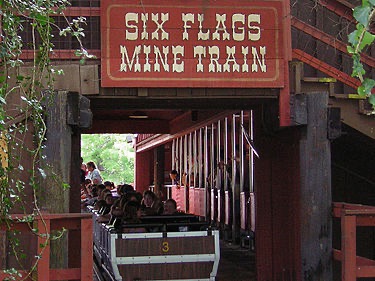
Built in 1966 at the original park, Six Flags Over Texas, Runaway Mine Train is the oldest Six Flags roller coaster. Themed as a gold mining cart gone rogue, guests sit in rustic-looking carts and zoom through a mining village straight out of the Old West. Besides its impressive age, this coaster is also credited with inspiring a trend of mine-themed rides across American amusement parks. Its cultural significance granted it Coaster Landmark Status in 2006.
Did you know?
Six Flags Great Adventure in New Jersey has a remake of this ride at the park.


